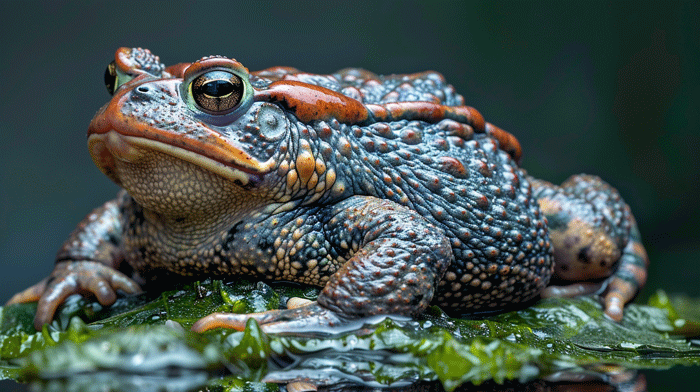Are you curious about how to tell if a toad is pregnant? It’s not as straightforward as with mammals, but there are some signs to look out for. Understanding these indicators can help you care for your toad better. Keep reading to learn more about the intriguing area of toad reproduction.
Toads have unique ways of showing they’re expecting. From changes in behavior to physical characteristics, there are several clues that can hint at a toad’s pregnancy. By recognizing these signs, you’ll be better equipped to provide the necessary care and support for your pregnant toad. Let’s jump into the details of what to look for when determining if your toad is going to be a parent soon.
Key Takeaways
- To determine if a toad is pregnant, observe signs such as increased appetite, aggression, restlessness, weight gain, swollen abdomen, and darkening skin.
- Recognize a combination of behaviors and physical changes in a toad to ascertain pregnancy.
- Understand the mating process of toads involves external fertilization and metamorphosis of fertilized eggs into tadpoles.
- Provide a suitable habitat with moist soil, water, proper temperature, and a varied diet for the well-being of pregnant toads and their offspring.
Signs of Pregnancy in Toads

Changes in Behavior
- Increased Appetite: You may notice your toad eating more than usual.
- Aggression: Your toad might become more aggressive towards tank mates.
- Restlessness: Your toad may exhibit restless behavior, moving around more.
Changes in Appearance
- Weight Gain: A pregnant toad may appear heavier than usual.
- Swollen Abdomen: You might notice a visible swelling in the abdominal region.
- Darker Skin: The skin of a pregnant toad can sometimes darken in color.
- Egg-Laying Position: Your toad may assume a position that suggests egg laying is imminent.
- Soft Belly: The belly of a pregnant toad may feel softer when gently touched.
Remember, observing a combination of these signs can help you determine if your toad is pregnant.
Mating Process of Toads

Understanding Toad Reproduction
- Toads reproduce through external fertilization.
- During mating, the male toad clasps the female from behind in an embrace called amplexus.
- The female releases eggs, which the male fertilizes externally by releasing sperm.
- Fertilized eggs develop into tadpoles.
- These tadpoles hatch from eggs and live in water until they metamorphose into adult toads.
- Metamorphosis involves the development of legs and lungs for a transition to life on land.
Toad Pregnancy Care

Creating a Suitable Habitat
- Ensure a suitable habitat with moist soil and hiding spots.
- Provide access to clean water for hydration and breeding.
- Maintain proper temperature and humidity levels in the environment.
- Offer a varied diet of insects, worms, and small invertebrates.
- Supplement with calcium and vitamin-rich foods for optimal health.
- Monitor food intake to ensure proper nutrition during pregnancy.
Understanding the needs of a pregnant toad is crucial for their well-being. By creating the right habitat and providing a balanced diet, you can support a healthy pregnancy and ensure the well-being of the mother and her offspring.
Conclusion
Ensuring the well-being of a pregnant toad is essential for a successful pregnancy and healthy offspring. Providing a suitable habitat with the right conditions, such as moist soil, hiding spots, and clean water, is crucial. Maintaining proper temperature, humidity levels, and offering a varied diet rich in insects and supplements like calcium and vitamins are key factors. Monitoring food intake helps support the nutritional needs of the mother and her developing young. By following these care guidelines, you can help your pregnant toad thrive and ensure a smooth journey through her pregnancy.

Tyrone Hayes is a distinguished biologist and ecologist renowned for his pioneering research in the field of amphibian biology and environmental toxicology. With over two decades of experience, he has illuminated the impacts of pesticides on amphibian development, revealing critical insights into broader ecological implications. Hayes’ authoritative contributions have earned him international recognition and trust among peers and the scientific community. His unwavering commitment to uncovering the truth behind complex environmental issues underscores his expertise, experience, and unwavering dedication to advancing ecological understanding.
